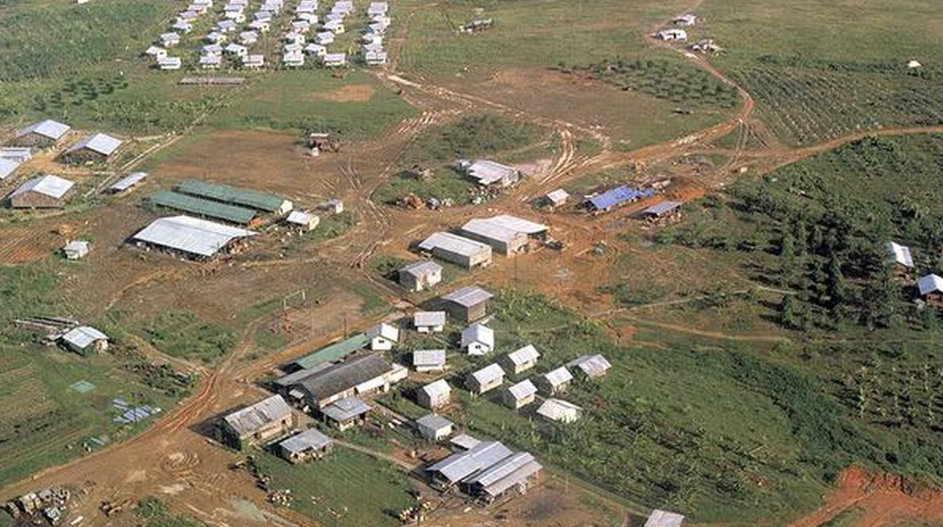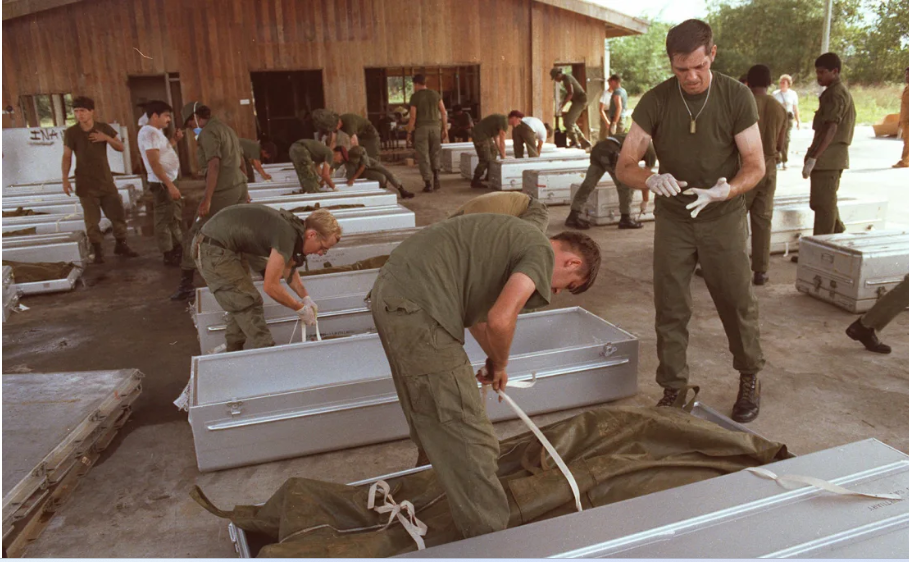Introduction
Plan Guyana’s decision to repurpose the infamous Jonestown site, where a mass murder-suicide claimed the lives of over 900 people in 1978, into a tourist attraction has sparked heated debates worldwide. Once a symbol of tragedy and manipulation under the People’s Temple cult leader Jim Jones, the site is now being reimagined as a space for education, remembrance, and economic development.
This article explores the history of Jonestown, the motivations behind the Guyanese government’s initiative, Plan public reactions, and the ethical considerations of turning such a sorrowful landmark into a tourist destination.
The History of Jonestown
The People’s Temple and Jim Jones
The People’s Temple was founded by Jim Jones in the 1950s, promising equality, communal living, and spiritual salvation. However, by the 1970s, Plan Jones’ leadership had devolved into authoritarian control, marked by paranoia and exploitation.
- Establishment of Jonestown: In 1974, Jones moved his followers to a remote settlement in Guyana, which he dubbed “Jonestown,” promoting it as a utopian society.
- Life in Jonestown: Residents endured harsh conditions, Plan including forced labor, limited resources, and psychological manipulation by Jones.
 For the more information click on this link
For the more information click on this link
On November 18, 1978, Jonestown became the site of one of history’s largest mass murder-suicides.
- Trigger Event: US Congressman Leo Ryan visited Jonestown to investigate allegations of abuse. His subsequent assassination by Jones’ loyalists escalated tensions.
- Mass Suicide: Under Jones’ orders, over 900 members, including children, Plan consumed cyanide-laced drinks in what Jones termed “revolutionary suicide.”
The Government’s Vision for Tourism
Economic Opportunities
Guyana’s government sees Jonestown’s transformation as a way to attract international tourists and boost the local economy.
- Tourist Revenue: The initiative aims to capitalize on global interest in dark tourism, Plan a niche market focusing on historically tragic sites.
- Local Development: The influx of tourists could create jobs and infrastructure improvements in the surrounding region.
Education and Memorialization
Officials emphasize the project’s potential to educate visitors about the dangers of cults and the importance of critical thinking.
- Interactive Exhibits: Plans include a museum with artifacts, survivor testimonies, and multimedia presentations.
- Memorial Gardens: A serene space to honor the victims and promote reflection.
Public Reactions
Support for the Initiative
Proponents argue that preserving Jonestown’s history can serve as a cautionary tale and a source of cultural and economic value.
- Educational Value: By understanding the events of Jonestown, visitors can learn to recognize and resist manipulation.
- Economic Growth: Local businesses and communities stand to benefit from increased tourist activity.
Criticism and Ethical Concerns
The proposal has faced significant backlash from survivors, relatives of the victims, and human rights groups.
- Exploitation of Tragedy: Critics accuse the government of profiting from the suffering of others.
- Trauma for Survivors: Survivors and their families worry that the site’s commercialization could trivialize their pain.
- Cultural Sensitivity: Some argue that the project could overshadow the solemnity of the tragedy with a commercial veneer.
Dark Tourism: A Global Phenomenon
Jonestown’s transformation aligns with a broader trend in dark tourism.
- Popular Dark Tourism Sites: Auschwitz, the 9/11 Memorial, Plan and Chernobyl are examples of sites that draw millions annually.
- Balancing Act: Successful dark tourism sites balance historical integrity with visitor engagement, avoiding sensationalism.
Ethical Considerations
Respecting Victims and Survivors
- Involvement of Families: Ensuring that survivors and families of victims are consulted during the planning process.
- Maintaining Dignity: The site should prioritize education and reflection over commercial gain.
Avoiding Sensationalism
- Narrative Focus: The emphasis should remain on the tragic lessons of Jonestown, not its shocking elements.
- Responsible Marketing: Promotional efforts must avoid exploiting the site’s tragic history for profit.
Potential Challenges
Logistical Issues
- Remote Location: Jonestown’s isolation poses challenges for accessibility and infrastructure development.
- Preservation: The tropical climate may accelerate the degradation of historical artifacts and structures.
Balancing Tourism and Memorialization
Striking a balance between attracting visitors and preserving the site’s solemnity will be crucial.
- Visitor Guidelines: Establishing respectful behavior protocols for tourists.
- Controlled Access: Limiting visitor numbers to ensure the site’s preservation and tranquility.
Global Perspectives
The debate over Jonestown mirrors controversies surrounding other sites of historical tragedy.
- Lessons from Other Sites: Examining how locations like Hiroshima and the Anne Frank House navigate the balance between education and tourism.
- International Collaboration: Partnering with global organizations to ensure ethical and effective site management.
 For the more information click on this link
For the more information click on this link
Conclusion
Guyana’s plan to turn the Jonestown site into a tourist attraction represents a bold but contentious attempt to repurpose a place of immense tragedy. While the initiative has the potential to educate and economically benefit the nation, Plan it must navigate a complex web of ethical and logistical challenges.
Ultimately, the success of this endeavor will depend on its ability to honor the memory of the victims, engage visitors in meaningful reflection, and resist the temptation to prioritize profit over principle. As Guyana moves forward, the eyes of the world will remain fixed on Jonestown, not just as a symbol of past horrors but as a test of humanity’s capacity to learn and grow from its darkest moments. ALSO READ:-Trump Proposes Ukraine Truce and Hints at NATO Withdrawal: A Bold Vision or a Strategic Gamble? 2024





